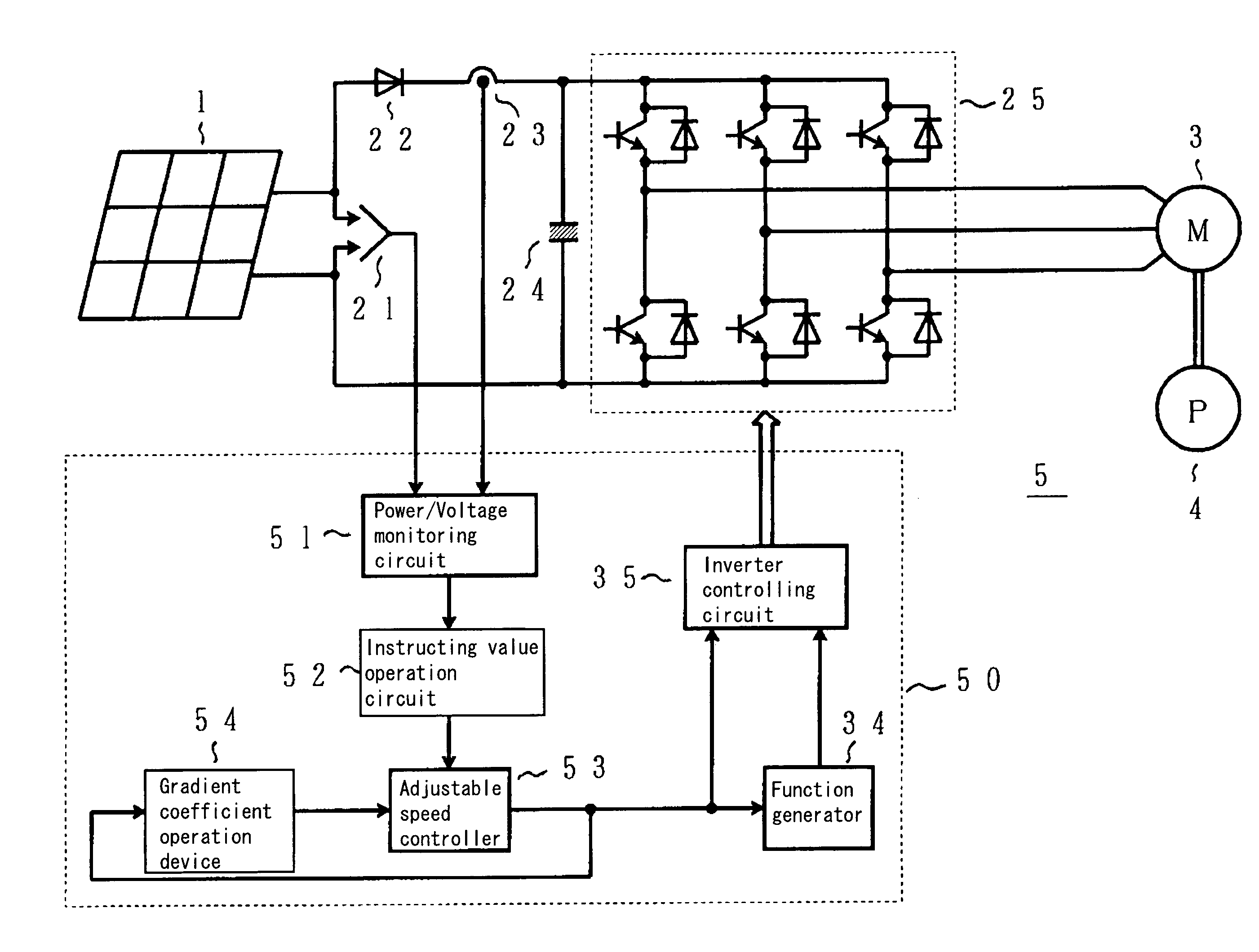Method and device for controlling photovoltaic inverter, and feed water device
a photovoltaic inverter and photovoltaic technology, applied in the direction of motor/generator/converter stopper, dynamo-electric converter control, instruments, etc., can solve the problems of motor b>3/b> reducing its speed and consequently power consumption, settling time for mppt control, and response time accompanying a rapid change in the amount of insolation, so as to improve the responsiveness to controlling operations and improve the stability of controlling operation
- Summary
- Abstract
- Description
- Claims
- Application Information
AI Technical Summary
Benefits of technology
Problems solved by technology
Method used
Image
Examples
Embodiment Construction
[0034]The embodiment of the present invention shown in the figures will be described below.
[0035]FIG. 1 is a circuit diagram of a photovoltaic inverter showing an embodiment of the present invention, and the components having the same function as the conventional circuits shown in FIG. 8 are indicated by the same codes.
[0036]In other words, the photovoltaic inverter 5 shown in FIG. 1 includes a controlling device 50 in place of the controlling device 26 of the conventional photovoltaic inverter 2 shown in FIG. 8.
[0037]The controlling device 50 is composed of, in addition to a function generator 34 and an inverter controlling circuit 35 having the same functions as the conventional device, a newly added power and voltage monitoring circuit 51, an instructing value operation circuit 52, an adjustable speed controller 53 and a gradient coefficient operation device 54. And as each of the solar cells 1 have individually a voltage−power (V−P) characteristic that varies as shown in FIG. 2 ...
PUM
 Login to View More
Login to View More Abstract
Description
Claims
Application Information
 Login to View More
Login to View More - R&D
- Intellectual Property
- Life Sciences
- Materials
- Tech Scout
- Unparalleled Data Quality
- Higher Quality Content
- 60% Fewer Hallucinations
Browse by: Latest US Patents, China's latest patents, Technical Efficacy Thesaurus, Application Domain, Technology Topic, Popular Technical Reports.
© 2025 PatSnap. All rights reserved.Legal|Privacy policy|Modern Slavery Act Transparency Statement|Sitemap|About US| Contact US: help@patsnap.com



